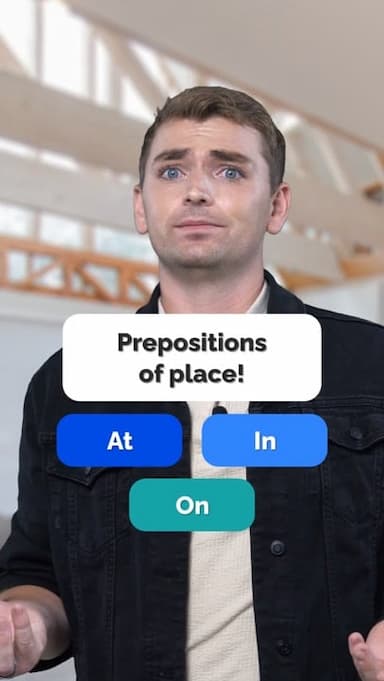Above / On top of / On
@Paul
#Prepositions
Above vs On Top Of vs On: Learn the Differences
Discover the differences between "above", "on top of", and "on" with clear examples in our video.
In this video, we clarify the differences between "above", "on top of", and "on", helping you use these terms correctly in English.
- Above: We use "above" when two objects are not touching. For example, "The pictures are above the couch". This indicates that the pictures are higher than the couch but not in contact with it.
- On: We use "on" when two objects are touching, and the placement is typical or expected. For instance, "The keys are on the table". This suggests that the table is a usual place for the keys to be placed.
- On Top Of: We use "on top of" when two objects are touching, but the placement is unusual or not typical. For example, "The keys are on top of the fridge". This implies that placing the keys on the fridge is not a common practice.
Watch the video to see visual examples and practice using "above", "on top of", and "on" in different contexts.
Get the full app experience
Engaging video lessons and fun quizzes to help you ace your English.
Improve your English Level
Improve your pronunciation
Practice conversations
Sharpen your listening Skills
Fix common mistakes in English
Learn Grammar in a fun way
Expand your English Vocabulary
Coming soon to Google Play
Similar videos for #Prepositions
© 2023 fluentjoy.com












